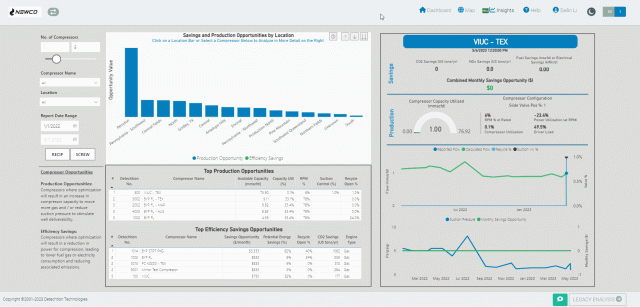
As the industry focuses its attention on mitigating GHG emissions and the costs associated with leaks and releases, Detechtion also invites E&Ps to think on a more holistic scale as to how their disparate assets in the field may affect their efforts for decarbonization.
More specifically, consider the potential carbon emissions caused by excess power and fuel consumption in remote compressors’ gas engines. Power for compression is most commonly proportionate to gas volumes and compression ratios as fuels or can be sourced directly from the gas driven engine or fuel taken from production gas. Burning of this gas fuel results in the release of combustion emissions, including CO2.
Now, more than ever, it is pertinent for the industry to utilize technology that supports their carbon strategies. The ability to closely monitor their assets to troubleshoot inefficiencies & estimate carbon savings via reduced power usage before having to step foot on-site is crucial.
Common compressor inefficiencies include:
- Recycle/Bypass valve open1
- High interstage pressure drops
- Cylinder inefficiencies (Blowby)
- Excess Compression (too many compressors)2
- Under-utilized compressors3
With fluctuating production volumes and field conditions, you can only imagine how difficult it is to ensure compressors are optimized accordingly. If you have not considered digitalizing your fleet management systems, we suggest starting now.

